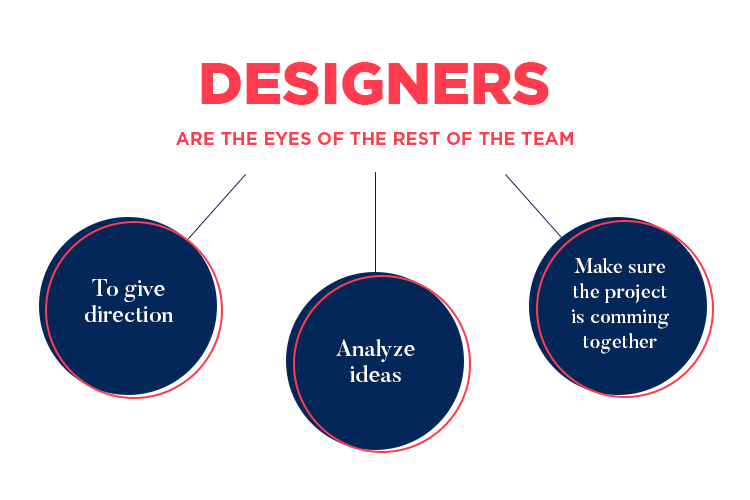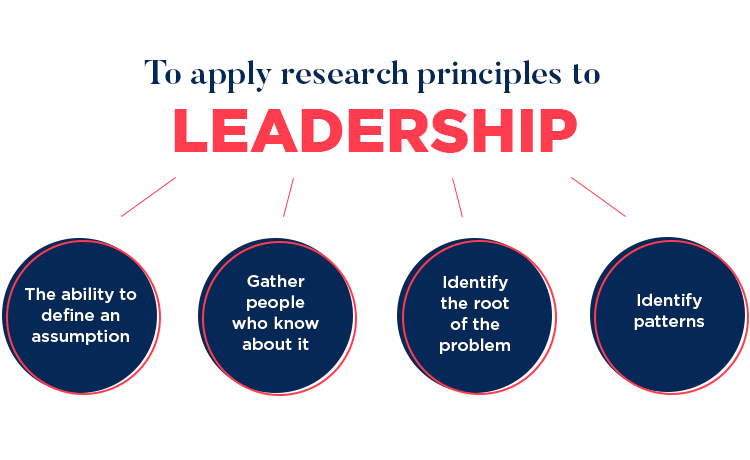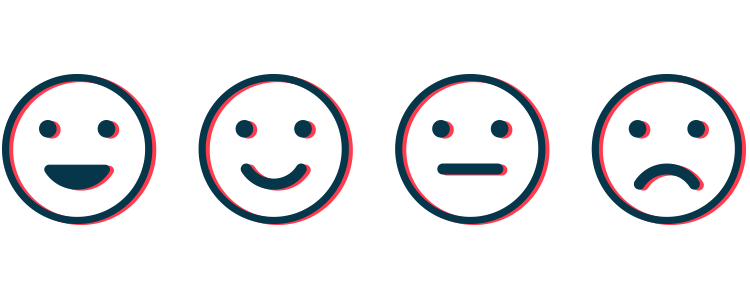Design Thinking is often used to encourage innovation, but can it be used as a model for leadership? Leslie Yang, Senior Manager from Opentable, shows how.
UX design is an ever-expanding sector, bringing a wave of demand for design leaders. But what kind of traits mark a good design leader? What sets a design leader apart from a designer?
We were fortunate enough to have Leslie Yang, Senior Design Manager at OpenTable, come over and share her experience as a leader – and a good one at that.
Leslie gives us an overview of the tools she uses to empower, encourage and potentialize the people in her team. Read on to find all the details about what key principles and concepts can help a manager transform into a true leader.
OpenTable talks about Design Thinking for leadership
Live with OpenTable in San Francisco talking about Design Thinking in UX
Posted by Justinmind Prototyping Tool on Tuesday, 15 October 2019
Leslie takes us through a brief tour of what her main goal is as a leader. As it happens, any given leader will have a long list of goals they want the team to reach. What generally separates successful leaders from others, is the presence and awareness of a larger, underlying goal.
Leslie is proud to share that she is well aware of that goal, and strives for it every single day. That is, to empower her designers to become equal thought partners with engineering and product management.
While this may seem like a small distinction to make in the large sea of goals leaders have, it has a powerful impact on how one perceives the team. Designers, for Leslie, are part of a larger product development group – and everyone works together towards the same end.
It goes to the root of what designers are in the eyes of the rest of the team. “We’re not just there to make things pretty” says Leslie. And we couldn’t agree more.

In the end, it is important to get everyone to understand the role of designers within the larger team – which can be to give direction, to analyze ideas and make sure the project is coming together.
Our speaker had a very valuable point to make when it comes to leading people, and it was a comparison between a designer’s and a leader’s toolbox.
A designer’s box may have models such as Lean UX, Design Thinking, along with a prototyping tool and sketching tools. It may come as a surprise that, for a design leader, much of those tools stay the same – what changes is how you use them.

Instead of focusing on using a prototyping tool to get deliverables, leaders will use models and workflows such as Design Thinking to build relationships. Let’s go over Leslie’s toolbox and how she uses leadership to empower.
Lean UX is a popular model that many design teams rely on. It’s all about directing people’s efforts into the right direction, and making sure team communication stays on track. But what does Lean UX mean when it comes to design leadership?
As it turns out, there are a few key concepts that Leslie holds dear, and that have a big impact on what a leadership feels like in her team.
Today’s design teams are no longer limited to just designers. You could have designers, developers, people from marketing, PMs – each bringing something of value to the table.
For Leslie, that is a strength and advantage. That means that each of these people will have a different take on things and think of different ways we could solve a problem. It’s all about prioritizing the larger group, working together towards the same direction.
“I’m not being valued over how many prototypes I make, it’s really about how well me and my greater team are performing and how much value we are adding to the business.”
Leslie Yang - Senior Design Manager at OpenTable
The biggest impact design leaders can have in a project, Leslie points out, is to stop talking about design and instead, start talking about themselves as a part of something larger: the team.
Looking back on a time when she first understood that designers and engineers shared the workflow but not the same mindset – and that more often than not, leaders failed to answer both sides’ needs. But when she managed to get everyone on the same page, something wonderful happened: the birth of shared trust among everyone.

The secret lies in the leader’s priorities. Many products leads out there tend to focus on getting things done faster, speeding up the development and cutting costs. This undermines people’s ability to come forth with issues or requests for changes in the workflow.
Now, she holds weekly one-on-one meetings with the team leaders from all corners of her larger team, when they are free to come to her with any and everything on their mind. She also takes these moments to try and help these individuals in any way she can, such as helping them better communicate with their own teams.
The classic take on this principle is to get things to the market, faster. But how can we turn this inwards, towards our own team? For our speaker, it’s just a matter of hitting a switch: we are already used to considering the experience of users, we should be considering the experience of employees too.
In order to illustrate how we could go about it, Leslie shared with us the story of a difficult conversation she had in her first few weeks as a leader. One of her designers conveyed to her that in their opinion, they could be considered a Senior Designer. It was difficult, because even though this person had evolved a lot, Leslie believed they still had a bit to go before earning that title.

It’s a tough conversation for both sides, and many of us will find that we’ve had to experience something similar with our respective leaders. This situation did make Leslie think, however, about feedback on people’s progress – and how there tends to be so little of it in design teams.
The answer to that came in the form of a monthly leveling, where everyone had their names, titles and responsibilities in the same document. Every month, people go over to this document and mark where they believe they are in a spectrum of progress, followed by Leslie’s own accession of that progress.
The final result they got from this experiment was that overall expectations were more realistic, and there was a certain checking of what employees could consider progress.
This principle is all about creating a culture of learning and instilling the mindset that everything is an assumption until you prove it. Just like designers have no way of knowing what users need until research is done, neither can leaders assume they know everything there is to know about their team.
The need for this culture and mindset became clear to Leslie when she first became a leader. She would find herself feeling the stress and frustration of dealing with completely unexpected situations for which she had no solution. However, as most leaders learn along their way, all this stress is felt by anyone who has to lead.
The researcher in her came up with a plan. If other people experienced the same challenges she did, it was possible to find them – and learn from them.

In this sense, Leslie defends that there is always a way for us to apply our research principles to leadership. The ability to define an assumption, gather people who know about it, narrow down on what the root of the issue is and identify patterns – are all great skills that we can apply to how we manage a team.
In her case, she looked for answers online, from other design leaders. She enrolled in design thinking courses and management classes – and the outcome was a wide array of new relationships with people. It taught her a lot about what a leader is and allowed her to feel more confident in her everyday moves.
Another favorite of design teams all over the world. Leslie describes Design Thinking as a cousin of Lean UX, and she has a great point there. Design Thinking is all about trusting people to identify patterns, find problems and come up with solutions. At the end of the day, that is exactly what Leslie is trying to achieve with her team.
And so, let’s take a look at how we can apply Design Thinking to leading design.
Leaders listen to complaints all the time. It can be rather easy to point out something that isn’t working, but we often fall short of finding the root of the problem – or seeing a path to a solution. And to that, Leslie has a simple but effective tactic: re-phrasing.
Re-phrasing questions can have a surprising impact on people. It’s almost like encouraging them to see the issue from a different perspective, which is indeed powerful. A personal favorite of our speaker is “How might we?”.

The power behind those simple words is that it encourages people to see what change would look like. It can be used for just about anything and it works as an invitation for people to imagine a path to the solution they need.
As we learned from Leslie, this part of the model is about being inspired to be better. Being in charge can get lonely – it can feel like a slightly isolated position to be in.
To that, Leslie recommends that you find your people – but not just any people. You want people who are honest, people who will tell you the truth to your face. For Leslie, hearing things you don’t want to hear is part of the job, and an important one at that.
“The whole saying ‘You don’t leave your company, you leave your manager’? That just haunted me.”
Leslie Yang - Senior Design Manager at Opentable
For Leslie, it was crucial to know how people experienced her leadership. She needed the testimonies, the data points. Otherwise, there was no way to know how she was doing or which way is up.
Just like no designer wants to see their product fail to reach testing standards, no leader wants to hear they are flawed. But they have to. The price for not asking any feedback from people on how you lead is the possibility of becoming a bad leader.

An important part of getting feedback is showing you will welcome it, as well as asking for it in the right way. Leslie found that most people will hesitate to offer critique when she used the word “feedback”. In contrast, people were quick to give suggestions for questions like “Is there anything I can do more of?”.
It’s incredibly difficult to look at your boss and offer a piece of criticism. It takes confidence in yourself and trust in your boss. And so, Leslie always makes sure she recognizes employees’ courage and trust. It can be as simple as “thank you for that. I know that wasn’t easy.”
Management has existed for a long time – much longer than UX design. And so, just about any leader has something useful to teach us. Leslie herself is in several management and leadership slacks, and finds that reaching out and becoming part of a community can be powerful.
Even something easy and simple, such as having a get-together or grabbing some coffee with other product leaders can have huge value. Leslie is the first to admit that many leaders are eager to share their opinions and experiences – leadership is their game, after all.

A secondary point she makes here is that many people are looking to build relationships while keeping an eye on the future. Design is an expanding field, and companies are constantly looking for talent. And so, even if they don’t have an opening or if they don’t need you right now, they’re happy to dedicate a little time to you.
It’s an opportunity to create a network in the field, and it could open the door to future offerings. And the best part is that by talking to other people, you foment your ability to have new ideas and implement new things in your team.
A sister principle to the Lean UX “making over analysis”. For Leslie, getting things done doesn’t refer just to the creation of UX design but also to managing her team. Just like the monthly progress evaluation exemplifies, it’s all about doing things that will actually help the people and not just the final product.
This could be anything ranging from making a tangible account of people’s progress to making sure they have a physical room to drink coffee and take breaks.
In the end, this principle is about doing rather than thinking. Once you actually get things done and implemented, you can test it and see if it has the results you expected – which brings us to the next point.
The spirit of research is of huge value to leaders, as we learned from Leslie. Another interesting point that links research and leadership is the idea that we can test new ideas – and see what happens. Much like designers run tests to try and find the boundaries of what pleases users, so too can leaders test what motivates and encourages employees.
Leslie shared with us a wonderful example of a little test she carried out on her team. One of her people came to her with the desire to improve their public speaking skills – to which Leslie suggested creating a book club. The new book club translated into people spending more time talking to each other, creating a tighter culture in the team.

This goes to show that something small and new can have a real positive effect on morale and how people relate to each other. For Leslie, the book club was something that came at a really small cost, but offered a huge payoff in the shape of a better team dynamics. And yes, that person did improve their public speaking.
Leslie shares with us that even though designers are likely to want to discuss design, it doesn’t always resonate with people from other departments, such as business-oriented individuals. As it turns out, not everyone gets excited about the interactions involved in a given page – but be that as it may, designers have a power that is ultimately priceless in the eyes of business.
That superpower is the ability to imagine a solution.
Leslie gives us the example of a designer in her team that created an integrations marketplace for their software. This was something that had been discussed by the product team for a long time, but was never implemented. As soon as product leaders were able to see a tangible marketplace, there was an immediate drive to see it through.

Sharing your work and your story can have a huge impact on other people, no matter what their area of expertise is. A story well told can convince people or make them see value where they didn’t before – and design is all about adding value.
One of the most important skills any leader can develop is the ability to talk about design to engineers or business representatives – the key, however, is speaking their language. What is that language? Well, it will depend on the person. Everyone has their own point of view, making it crucial that the team shares their opinions, so that the communication may improve over time.
Leslie is the first to admit that bridging this divide between design and everything else is not easy. In fact, it’s something that only recently was deemed important for design teams. And so, the entire design community is working on this power to properly communicate design to others. You could say that the entire design community’s communication skills are a work in progress.
From an early age, Leslie was shy and used to keep to herself. She believed in passive learning and in not taking the spotlight, like many introverts out there. Being in charge, however, changed all of that.
Present Leslie doesn’t hesitate to speak up, and has mastered the skill of talking to people no matter their background. That’s a crucial change in her behaviour that surely contributed to her becoming an increasingly better leader – someone who doesn’t hog the spotlight but won’t shy away from it either.
The main factor driving this change was a shift in her priorities and her focus. Now, she herself is no longer the most important thing. Her main focus is now supporting and backing her team who rely on her for guidance and direction. Putting your people first, it seems, is the common denominator of all true leaders.
PROTOTYPE · COMMUNICATE · VALIDATE
ALL-IN-ONE PROTOTYPING TOOL FOR DESIGN LEADERS
Related Content
 Learn how to design better e-learning platforms with user-centered UX principles, real examples, and high-fidelity prototyping tips to boost engagement and learning outcomes.13 min Read
Learn how to design better e-learning platforms with user-centered UX principles, real examples, and high-fidelity prototyping tips to boost engagement and learning outcomes.13 min Read Infinite scroll keeps users engaged, but it’s not always the best choice. This guide breaks down when to use it, when to avoid it, and how to design it right.14 min Read
Infinite scroll keeps users engaged, but it’s not always the best choice. This guide breaks down when to use it, when to avoid it, and how to design it right.14 min Read Learn how to design web and mobile app prototypes, how to test them and what to look for in a prototyping tool in this complete guide.15 min Read
Learn how to design web and mobile app prototypes, how to test them and what to look for in a prototyping tool in this complete guide.15 min Read


